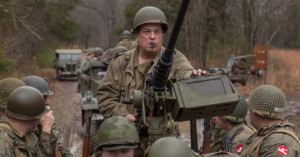
Playing World War II: Photographing an Ultra-Realistic Reenactment
Have you ever wondered what World War II was like? Last month I got a little closer.

Have you ever wondered what World War II was like? Last month I got a little closer.
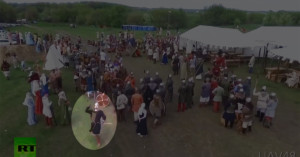
You can add "Russian guy with a spear" to your list of things your drone should fear. Joining Jet Skis, anti-Drone net bazookas, and mother nature herself, a Russian man at a history festival made his displeasure for drones known by taking one down with a spear.
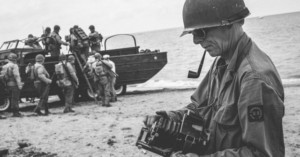
If you want to experience what it's like to shoot as a combat photographer, but don't want to actually risk getting shot at, you can look into photographing war reenactments. Lucas Ryan is a photographer who shoots reenactments, and last year he covered D-Day Conneaut, one of the world's premier D-Day reenactment events.
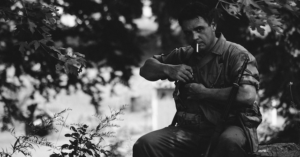
Conflict photography is typically a dangerous, traumatizing and, at least in part, heroic profession that puts you in the line of fire with only a camera as a weapon.
But as Penn State grad and former Onward State photographer Mitchell Wilston recently demonstrated to great effect, you don't need to put yourself in harm's way to capture the kinds of gritty, black-and-white conflict photography that has become iconic through the ages.
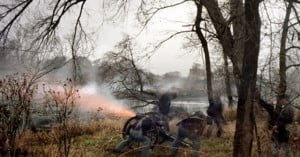
To commemorate the 150th anniversary of the Civil War, photographer Michael Falco is shooting a project titled "Civil War 150 Pinhole Project." His goal is to highlight the haunting beauty of civil war battlefields and to chronicle the various battle reenactments that are happening all across the country. To do so, he's using large format pinhole cameras that gives the poetic images an old fashioned look.
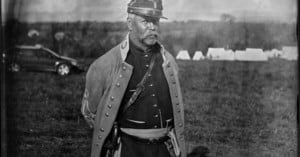
At first glance, New York-based photographer Richard Barnes' Civil War photos might look like they were taken from some museum or historical photographic archive. Look a little closer, however, and you'll begin to notice things that are quite peculiar. In one of them, there's a pickup truck parked in the background. In another, a man wears a T-shirt and baseball cap -- certainly not the fashion you'd expect to see in a mid-1800s photo.
The truth is, Barnes creates beautiful war photos that appear to be from over a century ago by using the Civil War-era process of wet plate photography to capture modern day Civil War battle reenactments.
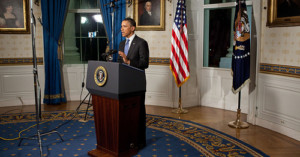
The White House announced last month that it would be ending the long-running practice of …
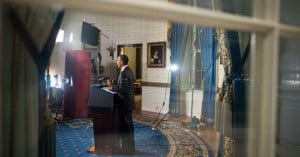
The White House is ending its long-running practice of reenacting speeches for still photographs after the controversy was rekindled last week by President Obama's Osama bin Laden speech.

You might not know this, but virtually all of the still photographs you've seen in the press showing President Obama announcing the death of Osama bin Laden are staged photographs. Reuters photographer Jason Reed wrote an interesting behind-the-scenes blog post on Monday, explaining:
As President Obama continued his nine-minute address in front of just one main network camera, the photographers were held outside the room by staff and asked to remain completely silent. Once Obama was off the air, we were escorted in front of that teleprompter and the President then re-enacted the walk-out and first 30 seconds of the statement for us.
Apparently this has been standard practice during Presidential speeches at the White House for quite some time, and is meant to prevent the noise of camera shutters from interrupting the televised address. Despite the fact that news organizations try to disclose the nature of the photos in the captions, the fact that these photos are staged doesn't sit well with some folks.